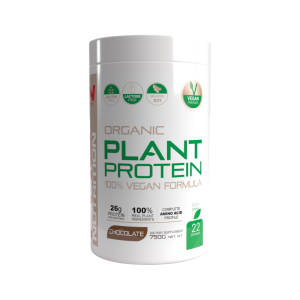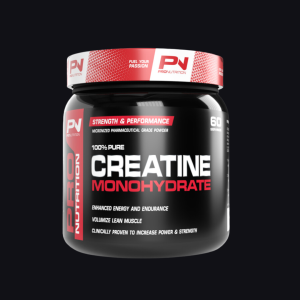Creatine Monohydrate: The Miracle Supplement
Empowering Your Fitness Journey with Science, Confidence, and Real Results

Introduction
Welcome to the ultimate guide on one of the most researched, celebrated, and misunderstood supplements in the world of fitness: creatine monohydrate. If you’ve spent even a modest amount of time scrolling through fitness forums, chatting with coaches, or reading sports nutrition magazines, you’ve almost certainly come across creatine. It’s often hailed as the gold standard for muscle building, strength gains, and athletic performance—but why?
As a personal trainer, online coach, and advocate of evidence-based fitness, I’ve seen firsthand how proper supplementation, coupled with targeted training, can completely redefine one’s physical capabilities. Yet, even with hundreds of scientific articles backing its safety and efficacy, creatine still finds itself surrounded by myths and scepticism. My mission with this post is simple: to cut through the noise, present the facts, and inspire you to make informed choices about your health and performance.
Whether you’re a seasoned athlete, a weekend warrior, or just starting your fitness journey, you deserve transparency and knowledge. Let’s dive in, not just with numbers and studies, but with real-world results and personal stories—including my own—so by the end of this read, you’ll know exactly how creatine monohydrate can fit into your fitness arsenal.
What Is Creatine Monohydrate?
Creatine monohydrate is a naturally occurring compound found in small amounts in foods like red meat and fish—and in even greater amounts, it’s stored in your muscles as phosphocreatine. Its primary role? Fuelling high-intensity, short-duration movements such as sprinting, heavy lifting, and jumping by rapidly regenerating ATP, the cellular energy currency (Kreider et al., 2017).
Supplementing with creatine monohydrate increases your muscles’ creatine stores, enhancing your ability to perform explosive, repeated bouts of activity. This isn’t just anecdotal; it’s a physiological fact supported by decades of research.
Why Is Creatine Called a “Miracle Supplement”?
The word “miracle” is thrown around loosely in the supplement industry, but creatine monohydrate has earned its stripes. Let’s get specific:
- Muscle Growth: Numerous studies have shown that creatine supplementation, combined with resistance training, leads to greater gains in muscle mass compared to training alone (Branch, 2003; Candow et al., 2019).
- Strength and Power: Creatine reliably boosts maximal strength and explosive power, making it a go-to for athletes in sports ranging from football to weightlifting (Buford et al., 2007).
- Improved Recovery: There is increasing evidence that creatine helps reduce muscle damage and inflammation post-exercise, enabling faster recovery (Rawson & Volek, 2003).
- Cognitive Benefits: Recent research suggests creatine supplementation can even enhance cognitive function, particularly in periods of sleep deprivation or mental fatigue (Avgerinos et al., 2018).
Debunking the Myths: Safety and Side Effects
Despite its proven benefits, creatine is often shrouded in myth. The most common? That it’s dangerous, causes kidney damage, or leads to dehydration. Time to set the record straight.
According to a comprehensive review by Kreider et al. (2017), creatine monohydrate is one of the safest sports supplements available, with no credible evidence linking it to kidney damage in healthy individuals. In fact, both short- and long-term studies (up to five years) have not observed adverse health markers.
It’s true that creatine can cause a slight increase in water retention in muscles, especially during the initial loading phase. But this is a physiological response—not a health risk. Staying hydrated is always smart, but there’s no need for concern beyond what’s standard for active individuals.
How to Take Creatine Monohydrate: Dosage and Timing
The research is clear: the most effective way to supplement with creatine is to start with a loading phase—20 grams per day (split into four 5-gram servings) for 5–7 days—followed by a maintenance dose of 3–5 grams per day (Kreider et al., 2017).
Alternatively, you can skip the loading phase and just take 3–5 grams daily; your muscles will reach saturation in about 3–4 weeks. Creatine isn’t time-dependent, so you can take it any time of day—before, after, or even with meals.
Mix it with water or your favourite shake. It pairs especially well with carbohydrates, which can enhance uptake.
Who Should Take Creatine Monohydrate?
Creatine isn’t just for bodybuilders or elite athletes. The supplement offers benefits for:
- Anyone Engaged in Resistance or High-Intensity Training: From teens to older adults, creatine amplifies the gains from structured exercise.
- Vegetarians and Vegans: Since plant-based diets contain little creatine, supplementation can result in even more pronounced benefits (Burke et al., 2003).
- Older Adults: Research shows creatine can help counteract age-related muscle loss (sarcopenia) and support functional strength (Candow et al., 2019).
- Cognitive Support Seekers: Emerging evidence points to potential brain health and neuroprotective benefits (Avgerinos et al., 2018).
Personal Experience: The Game-Changer in My Own Training
Let’s step out of the lab for a moment. As someone who’s tried nearly every supplement under the sun, I’ll be honest: few have delivered tangible, lasting results like creatine monohydrate. I recall my own first 8-week cycle—paired with a new strength program. Not only did my main lifts (squat, bench, and deadlift) climb noticeably, but I also felt more resilient between sessions. The difference wasn’t just in the numbers, but in the quality of my training and recovery.
Many of my clients echo similar sentiments. From busy parents juggling family and fitness, to competitive athletes chasing records, the feedback is consistent: with creatine, the ceiling for progress lifts higher.
Selecting Quality Creatine: What to Look For
Not all supplements are created equal. When choosing a creatine monohydrate, look for:
- Purity: opt for products labelled “Creapure” or that are third-party tested for quality and purity.
- Simple Ingredients: Avoid unnecessary additives or fancy blends. Pure creatine monohydrate is king.
- Solubility: High-quality creatine should dissolve easily in water without clumping.
Be wary of companies making wild claims or selling expensive alternatives (like creatine ethyl ester or liquid creatine), which have not shown superior results in clinical trials (Kreider et al., 2017).
Frequently Asked Questions (FAQ)
- Will creatine make me look bloated? Some water retention is normal, but it’s mostly inside the muscle cell, not under your skin. Any added “fullness” tends to enhance muscle definition, not obscure it.
- Is cycling creatine necessary? For most people, there’s no need to cycle off creatine. Long-term research supports continuous use (Kreider et al., 2017).
- Can teenagers safely take creatine? While more research is needed, studies indicate it’s safe for healthy teens engaged in supervised resistance training (Jagim et al., 2018).
Making an Informed Decision
The beauty of creatine monohydrate lies not just in its physical benefits but in its accessibility. It’s a supplement that democratizes performance, giving everyone from beginners to seasoned athletes a scientifically proven edge.
But don’t just take my word for it. Examine the literature, consult with your healthcare provider if you have underlying health conditions, and listen to your body’s response.
Conclusion
Creatine monohydrate stands tall as the miracle supplement not because it promises shortcuts, but because it delivers consistent, measurable, and science-backed results. Muscle growth, strength, cognitive enhancement, and recovery benefits—these aren’t marketing slogans, but realities observed in countless studies and confirmed in real-world application.
If you’re seeking a supplement that aligns with your dedication to progress—whether you’re joining a group class, working one-on-one with a coach, or following an online program—creatine monohydrate deserves a place on your shelf. Its safety profile is impeccable, its cost is minimal, and its effectiveness is legendary.
Take the next step—empower your journey with science, confidence, and a community that supports your ambitions. I’ve seen the difference it makes, and I invite you to experience the miracle for yourself.
Ready to unleash your full potential? Creatine monohydrate isn’t just a supplement; it’s a catalyst for transformation. Let’s get stronger, together.
Sources
- Avgerinos, K. I., Spyrou, N., Bougioukas, K. I., & Kapogiannis, D. (2018). Effects of creatine supplementation on cognitive function of healthy individuals: A systematic review of randomized controlled trials. Experimental Gerontology, 108, 166-173.
- Branch, J. D. (2003). Effect of creatine supplementation on body composition and performance: A meta-analysis. International Journal of Sport Nutrition and Exercise Metabolism, 13(2), 198-226.
- Buford, T. W., Kreider, R. B., Stout, J. R., Greenwood, M., Campbell, B., Spano, M., Ziegenfuss, T., Lopez, H., Landis, J., & Antonio, J. (2007). International Society of Sports Nutrition position stand: creatine supplementation and exercise. Journal of the International Society of Sports Nutrition, 4(1), 6.
- Burke, D. G., Chilibeck, P. D., Parise, G., Candow, D. G., Mahoney, D., & Tarnopolsky, M. (2003). Effect of creatine and weight training on muscle creatine and performance in vegetarians. Medicine & Science in Sports & Exercise, 35(11), 1946-1955.
- Candow, D. G., Vogt, E., Johannsmeyer, S., Forbes, S. C., & Farthing, J. P. (2019). Strategic creatine supplementation and resistance training in older adults. Applied Physiology, Nutrition, and Metabolism, 44(9), 921-928.
- Jagim, A. R., Stecker, R. A., Harty, P. S., Erickson, J. L., Kerksick, C. M., & Kreider, R. B. (2018). Safety of creatine supplementation in active adolescents and youth: A review. Journal of the International Society of Sports Nutrition, 15(1), 37.
- Kreider, R. B., Kalman, D. S., Antonio, J., Ziegenfuss, T. N., Wildman, R., Collins, R., … & Lopez, H. L. (2017). International Society of Sports Nutrition position stand: safety and efficacy of creatine supplementation in exercise, sport, and medicine. Journal of the International Society of Sports Nutrition, 14(1), 18.
- Rawson, E. S., & Volek, J. S. (2003). Effects of creatine supplementation and resistance training on muscle strength and weightlifting performance. Journal of Strength and Conditioning Research, 17(4), 822-831.


